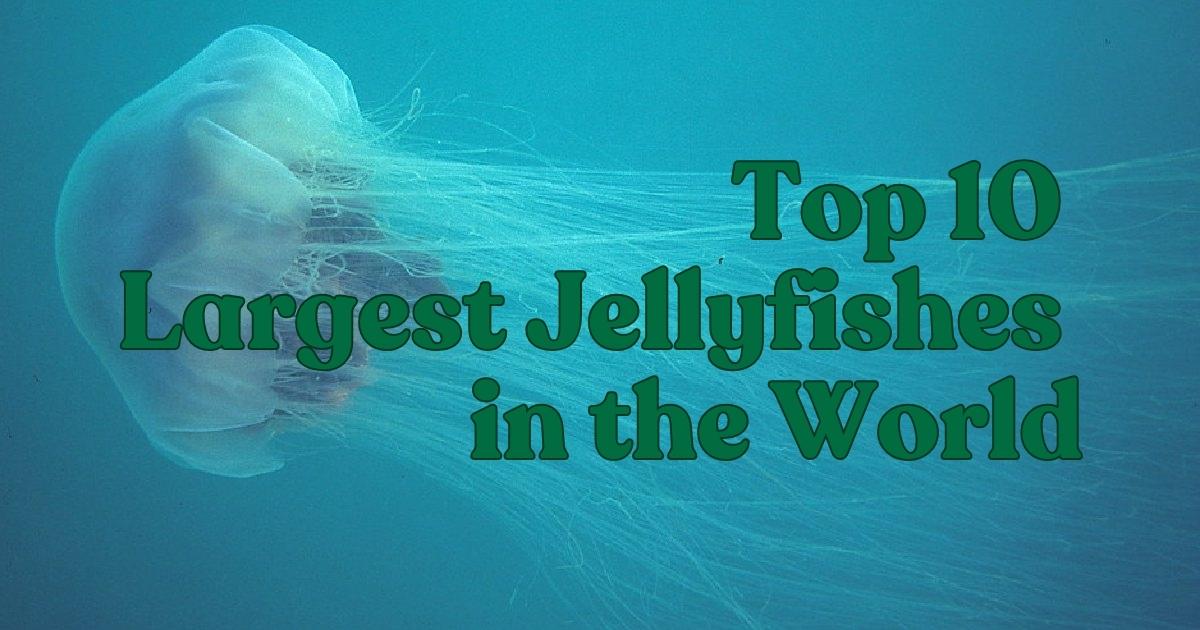Jellyfish are fascinating aquatic creatures with exquisite beauty and ferocious sting cells. Large jellyfish are spectacular and intimidating, but most jellyfish are delicate and nontoxic. Researchers and ocean enthusiasts are astonished by these huge jellyfish, which may grow as big as blue whales. Discover the largest jellyfish traits and their significance to the ocean ecology.
10. Sea Wasp
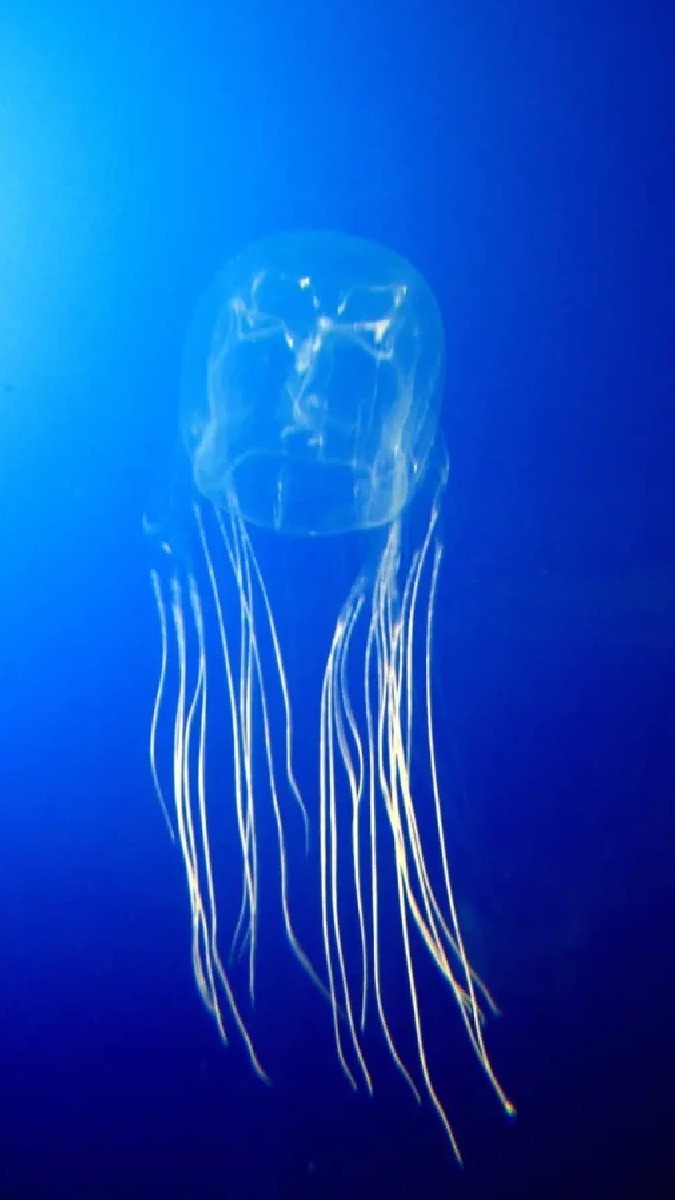
- Size: Bell up to 30 cm
- Scientific Name: Chironex fleckeri
- Key Features: Transparent body, highly venomous, box-shaped bell
One of the most dangerous toxic aquatic creatures is the Sea Wasp (Chironex fleckeri). This box jellyfish does not appear to be the biggest, yet its stinging cells are deadly. It features rectangular bells with long tentacles extending. In tropical Indo-Pacific oceans, the Sea Wasp’s venom may trigger terrible suffering and even death.
Millions of nematocysts adorn the Sea Wasp’s 10-foot stalks. Venom is pumped into tiny invertebrates and fish by these nerve cells. A single venom can kill humans, rendering the Sea Wasp among the most avoided jellyfish.
9. Venus’s Girdle
- Size: Up to 1 meter in length
- Scientific Name: Cestum veneris
- Key Features: Ribbon-like body, bioluminescent, fast swimmer
Captivating Venus’s Girdle jellyfish is similar to a long, luminescent silk. Its ribbon-shaped structure can grow to 1 meter, unlike other jellyfish that feature bells. Because of its body structure, this jellyfish slides through the water at a rapid speed, and its luminescent glow reflects the ocean’s bottom.
Attractive and enormous, Venus’s Girdle is nontoxic to mankind. Its main weapon is bioluminescence, which terrifies attackers. This jellyfish’s bright, ribbon-like look fascinates swimmers and underwater photography enthusiasts in the Mediterranean Sea.
8. Barrel Jellyfish
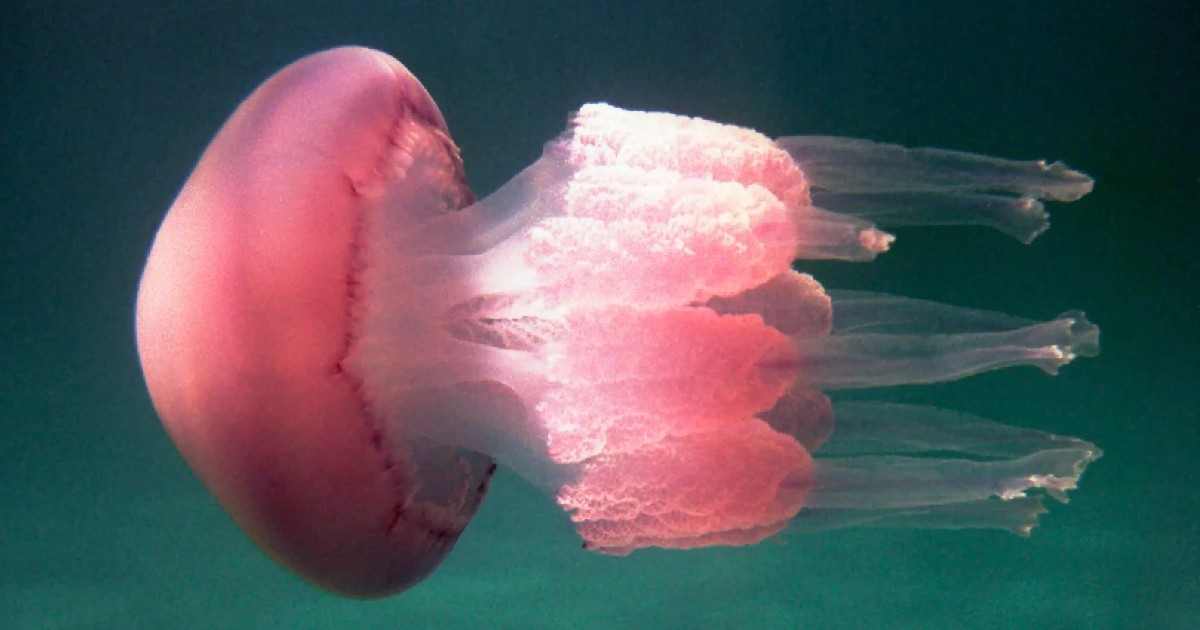
- Size: Bell up to 90 cm in diameter
- Scientific Name: Rhizostoma pulmo
- Key Features: Thick, barrel-shaped bell, migrates with ocean currents, harmless to humans
Barrels, commonly referred to as dustbin-lid jellyfish, are among the largest jellyfish worldwide and are found in the North Atlantic and Mediterranean. Its long tentacles, though less venomous compared to other jellyfish, collect phytoplankton and small fish. Its bell may extend up to 90 cm.
This jellyfish is often seen migrating with ocean currents, drifting through the cold waters of its habitat. Barrel Jellyfish are safe to people and are coveted for their glassy appearance. Tourists are captivated by the summer scrubbing ashore. Marine scientists examining ocean waves and jellyfish movement find their jelly-like texture and safety remarkable.
7. Purple Striped Jelly
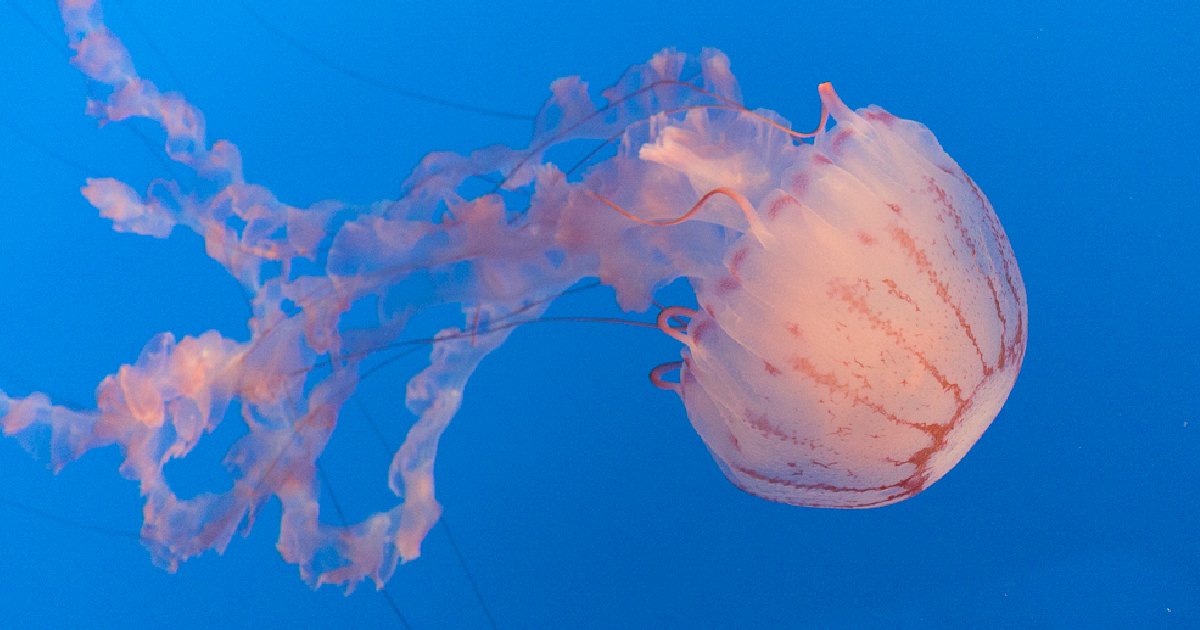
- Size: Bell up to 70 cm in diameter
- Scientific Name: Chrysaora colorata
- Key Features: Purple-striped bell, long tentacles, mild sting
An exquisite California coastline creature is known as the Purple Striped Jelly. Arguably among the finest jellyfish in the marine environment, it has a 70-cm bell featuring purple patterns. As it lightly floats throughout the water, its extended tentacles stick around after the bell.
Although its irritation is insignificant and not dangerous, the Purple Striped Jelly possesses sting cells. This particular type of jellyfish often moves along the ocean waves in massive masses identified as blooms. Visitors can take in its elegance in fish tanks without suffering a sting.
6. Tiburonia
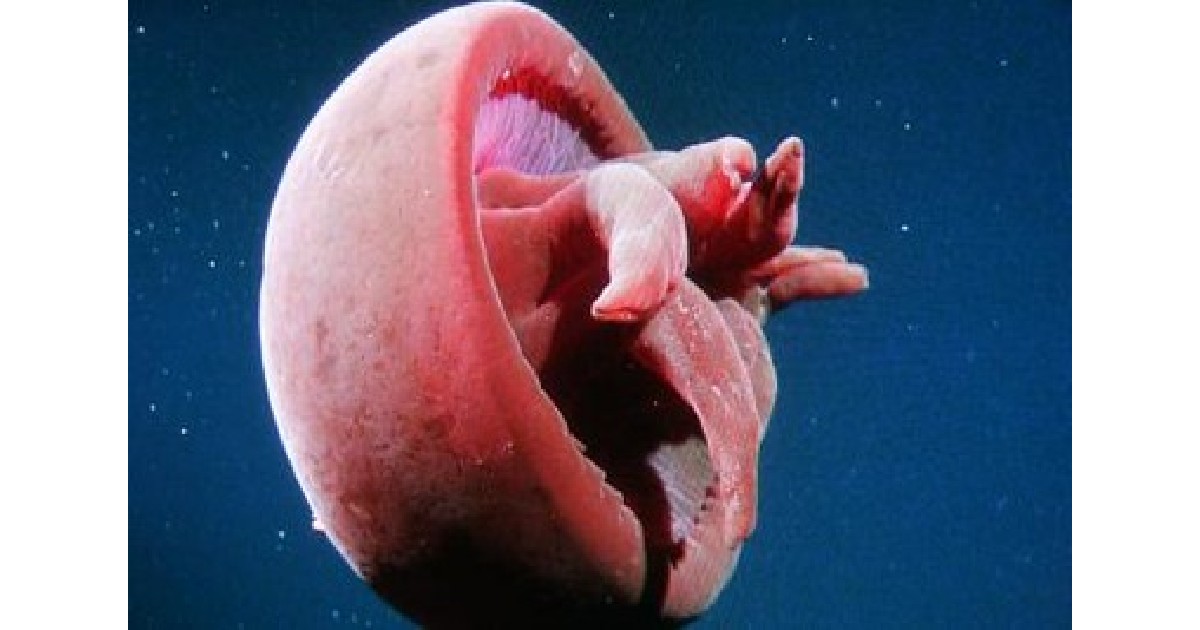
- Size: Bell up to 1 meter in diameter
- Scientific Name: Tiburonia granrojo
- Key Features: Bright red bell, deep-sea species, lacks long tentacles
In 2003, the submerged Tiburonia, or gigantic red jellyfish, became known. This jellyfish, stretching 1 meter, ranks as one of the largest in the world. Tiburonia jellyfish can be identified by their sparkling red hue and absence of huge tentacles.
This giant jellyfish drifts delicately in the Pacific Ocean’s deepest waters. It catches prey in low-nutrient underwater conditions, employing its thick, gelatinous physique. The Tiburonia’s habits and role in the ocean’s ecology remain unclear.
5. Sea Nettle

- Size: Bell up to 60 cm in diameter
- Scientific Name: Chrysaora fuscescens
- Key Features: Long, flowing tentacles, powerful sting, found in coastal waters
Sea nettles are prevalent jellyfish observed on Pacific Ocean coastlines, notably in California. Bells may be as big as 60 cm wide, and tendrils can reach a few meters. Coastal divers frequently come across Sea Nettles, which can be unpleasant but not deadly.
The Sea Nettle injects venom into tiny creatures and algae through its extensive tentacles. Those who are stung by it will experience discomfort, but it is unlikely to kill them. The aquariums feature the Sea Nettle’s stunning movement and long tentacles.
4. Stygiomedusa gigantea
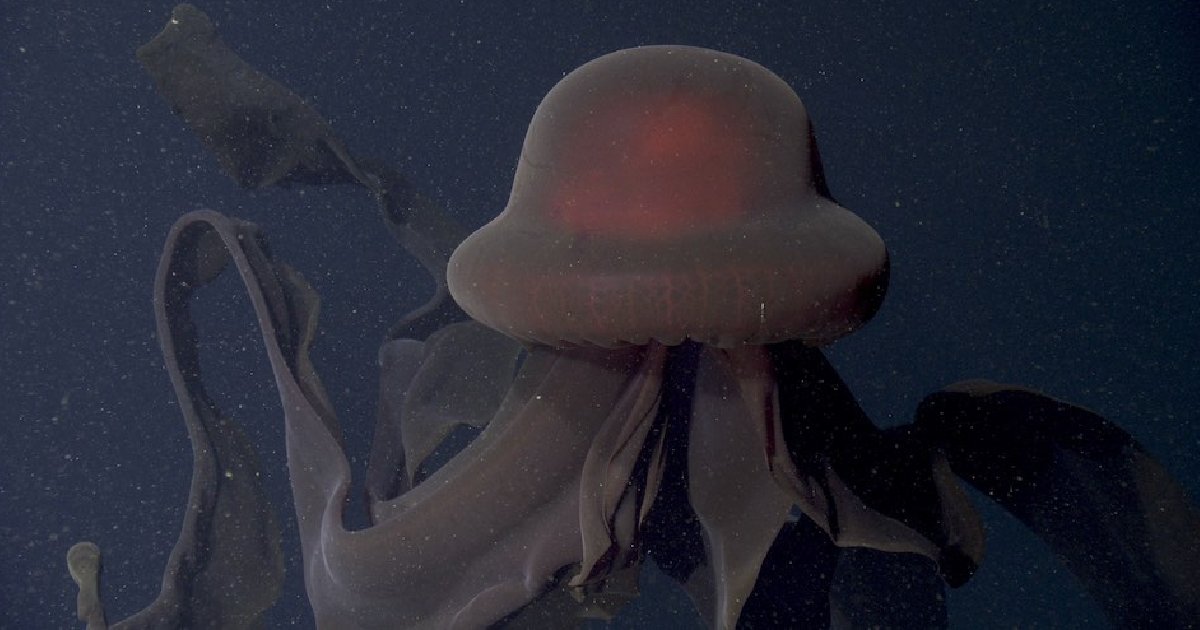
- Size: Bell up to 1 meter in diameter
- Scientific Name: Stygiomedusa gigantea
- Key Features: Rare species, long ribbon-like arms, deep-sea dweller
Stygiomedusa gigantea, one of the strongest large jellyfish, features a 1-meter bell. The ribbon-like arms of this species from the deep sea may extend a few meters in length. Instead of tentacles, the Stygomedusa gigantea employs its lengthy arms to seize its quarry.
This uncommon jellyfish moves in the deep ocean’s dim, icy waters in quest of food. Due to its size and distinct shape, it is noteworthy that marine scientists have only rarely observed it in the ocean depths. Marine scientists are exploring this species’ worth in deep-sea ecosystems.
3. Pink Meanie
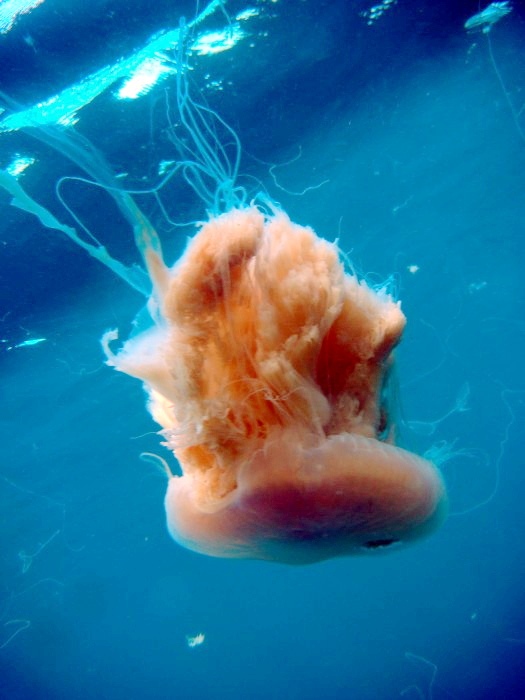
- Size: Bell up to 70 cm in diameter
- Scientific Name: Drymonema larsoni
- Key Features: Predatory jellyfish, feeds on other jellyfish, bright pink color
Only a few jellyfish attack other jellyfish, such as the Pink Meanie. The creature hunts prey through its lengthy tendrils and 70-centimeter bell. Pink Meanie was named for its exceptional pink color and violent eating activities.
Commonly found in the Gulf of Mexico, the Pink Meanie utilizes its strong tentacles to capture vast colonies of moon jellies. Its diet is different from that of jellyfish, which consume algae and small fish. The Pink Meanie demonstrates nature’s variety and complexity.
2. Nomura’s Jellyfish
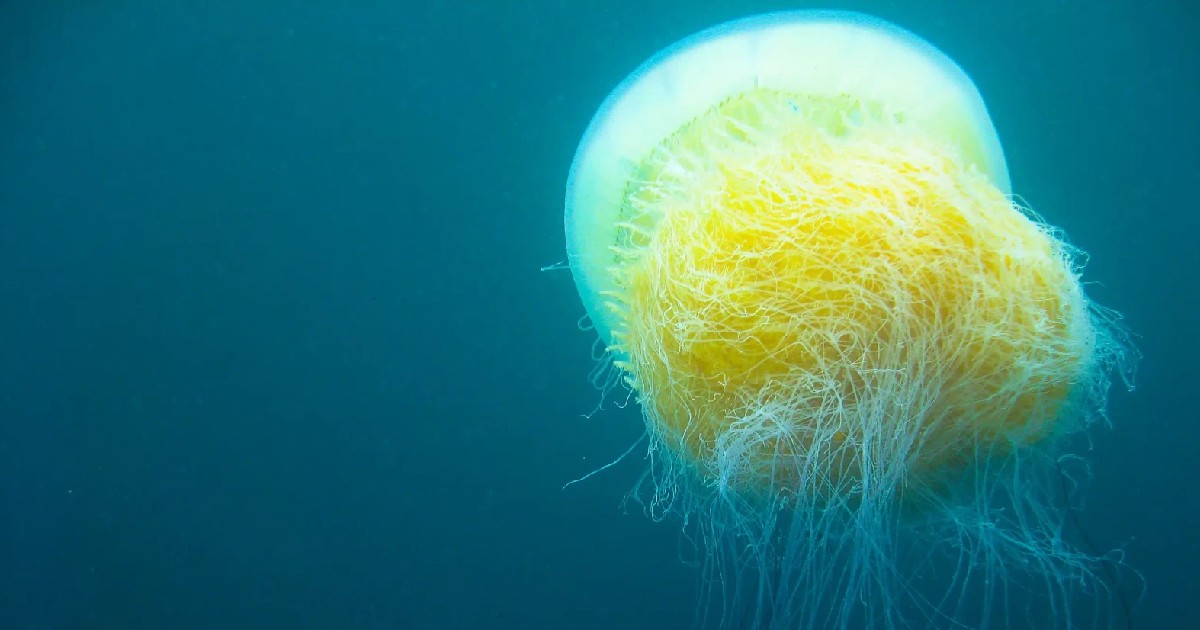
- Size: Bell up to 2 meters in diameter
- Scientific Name: Nemopilema nomurai
- Key Features: One of the largest jellyfish, migrates with ocean currents, found in the Yellow Sea
Another of the largest jellyfish in the world is the Nomura’s Jellyfish. Its bell may reach up to 2 meters through and weigh up to 200 kilograms. Nomura’s jellyfish form seasonal blooms in the Yellow Sea and East China Sea, where huge quantities travel with the waves of the ocean.
Although the sting can be unpleasant, Nomura’s jellyfish are safe for mankind. Their extensive tentacles eat algae and small fish. Marine scientists are investigating Nomura’s jellyfish since the population blooms may damage the local fishing industry.
1. Lion’s Mane
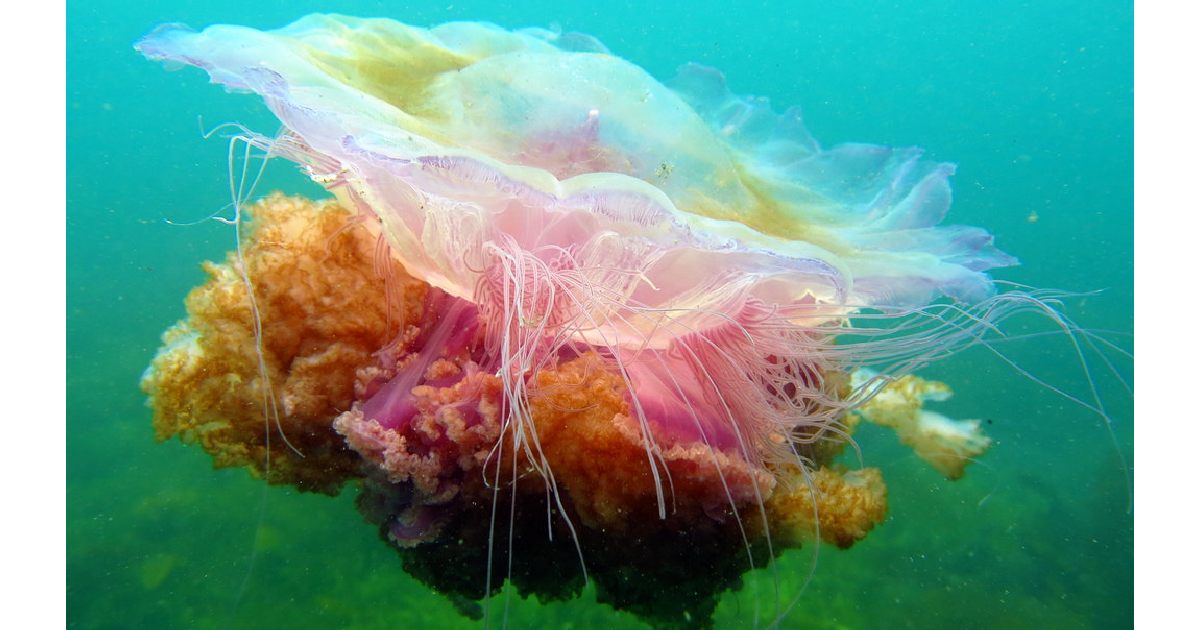
- Size: Bell up to 2.5 meters in diameter, tentacles up to 30 meters (100 feet)
- Scientific Name: Cyanea capillata
- Key Features: Largest jellyfish species, long tentacles, found in cold waters
The Lion’s Mane jellyfish, the world’s largest, is distinguished by its 2.5-meter bell and 30-meter tendrils. Lion’s Mane jellyfish, prevalent in the cold North Atlantic and Arctic, is roughly identical in size to a blue whale.
It traps fish and other creatures using its expanded tentacles’ blistering cells. The slow-swimming Lion’s Mane jellyfish leverages the waves of the ocean. Humans are safe from its size, but its venom can cause harm. Lion’s Mane jellyfish is one of the ocean’s most striking organisms.
Conclusion
The largest jellyfishes in the world are some of the most remarkable creatures in the ocean, with their long tentacles, massive bells, and diverse habitats. From the deadly sting of the Sea Wasp to the awe-inspiring size of the biggest jellyfish Lion’s Mane, these represent the diversity and wonder of marine life. Whether drifting with ocean currents or lighting up the deep sea with bioluminescence, jellyfish continue to captivate scientists and ocean enthusiasts alike.
Frequently Asked Questions (FAQs)
What is the largest jellyfish ever recorded?
The Lion’s Mane jellyfish (Cyanea capillata) holds the title of the largest jellyfish ever recorded. Its bell can grow up to 2.5 meters (8 feet) in diameter, and its tentacles can extend to an astonishing 30 meters (100 feet), making it the largest jellyfish species in the world, often found in the cold waters of the North Atlantic and Arctic.
Is the world’s largest jellyfish bigger than a blue whale?
While the Lion’s Mane jellyfish has tentacles that can reach up to 30 meters (100 feet) in length, it is not bigger than a blue whale in overall mass or size. A blue whale can grow up to 30 meters in length and weigh over 150 tons, making it the largest animal on Earth, although the jellyfish’s tentacles can rival its length.
Do jellyfish feel pain?
Jellyfish do not have a central nervous system, brain, or pain receptors, so it is generally believed that they do not feel pain in the way humans or other animals do. Their simple nerve net allows them to react to their environment, but it lacks the complexity required to process pain or emotions.
Is the lion’s mane jellyfish deadly?
The Lion’s Mane jellyfish is not typically deadly to humans, but its sting can cause severe pain, redness, and discomfort. In rare cases, allergic reactions or contact with large numbers of tentacles could lead to more serious symptoms. However, it is not considered one of the most lethal jellyfish species compared to box jellyfish or the Sea Wasp.
What is the deadliest jellyfish alive?
The Box Jellyfish (Chironex fleckeri), also known as the Sea Wasp, is the deadliest jellyfish alive. Its venom is incredibly potent and can cause excruciating pain, cardiac arrest, and death within minutes if not treated. It is responsible for more deaths than any other jellyfish species, primarily found in the waters around Australia and Southeast Asia.

